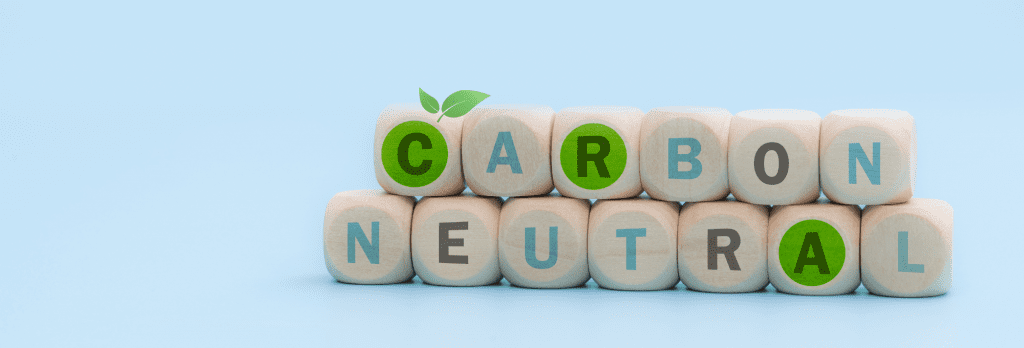What does it mean when a brand says they’re carbon neutral?
Guide, Services, Social & Environmental Services, Sponsored Content
Guide, Services, Social & Environmental Services, Sponsored Content
This is a sponsored article from SustainabilityTracker.com member Trace.
Have you seen some of your favourite brands saying they’re now carbon neutral?
As the pressure mounts on businesses to take more responsibility for their impact on the environment, a growing number are taking the step to become carbon neutral as one way to improve their sustainability credentials.
But what does being ‘carbon neutral’ actually mean, and why should it matter to consumers? Read on to find out!
A business or even individuals can achieve carbon neutrality by measuring their carbon footprint and purchasing verified carbon credits equal to or above the amount of carbon they emit.
Carbon credits are a mechanism for funding projects in other parts of the world which avoid, reduce or store carbon – such as investing in renewable energy projects to produce carbon neutral electricity. One carbon credit is equivalent to one metric tonne of carbon (or equivalent greenhouse gases) removed or prevented from being released into the atmosphere. To be credible, the projects that produce the carbon credits must be verified by well-respected external organisations, such as VCS or Gold Standard.
Carbon neutrality is usually calculated and validated on an annual basis, which in the case of a business means measuring the emissions of their last 12 months of operations and purchasing enough carbon credits to offset those emissions in order to maintain a valid carbon neutral claim.
It’s a common misconception that a business can become carbon neutral by planting trees. While trees can be very effective at sequestering carbon from the atmosphere, simply planting trees does not allow a business to claim they are carbon neutral. This is because trees are not very reliable at sequestering carbon in a predictable way; the amount they sequester differs widely based on factors like the tree type, where it is planted and how long it lives. Unless the trees planted are intentionally protected for years to come – which in many cases they are not – they cannot be used to produce certified carbon credits and therefore cannot directly offset a company’s emissions.

A business becoming carbon neutral is a fantastic sign that they’re taking responsibility for their emissions. This is because in order to become carbon neutral, the company has to first measure and therefore become aware of their environmental impact, in detail. This is no small feat!
In addition to this, by purchasing carbon credits, a business is putting a price on their emissions and therefore holding themselves accountable not just ethically, but also financially to reduce their emissions over time. Continuing to offset carbon emissions will only become more expensive in future as the price of carbon increases, so this means any business wanting to remain carbon neutral is incentivised to consider how their operations could be changed to reduce their emissions first.
This said, carbon neutrality should be viewed as the first, important step on the journey to ‘net zero’, rather than the end goal. A business reaches ‘net zero’ when operational changes are made to prevent at least 90% of a business’ emissions so offsetting is only required to cover 10% or less of their overall emissions. Whether they choose to set a net zero target or not (as this can be quite tricky!), every business should continue to measure their emissions and create a plan to reduce emissions year on year, gradually reducing their reliance on offsets.
As maintaining carbon neutral status requires continual renewal, consumers should be sure to stay up to date with the progress of the brands they buy from and ensure the company is not only purchasing credible offsets but also delivering on its plans to reduce its emissions over time.

If you work in or own a business that would like to become carbon neutral, but you’re not sure where to start, here are a few tips.
Step 1: Measure → The first step is to measure your carbon footprint, a process through which Trace can guide you. You will need to consider everything from the energy used in your factories and built environment, to the transport emissions from your staff, to the transportation of your goods and services.
Step 2: Reduce → Next, you should start to plan how you might reduce these emissions moving forward. This may involve anything from switching to LED lightbulbs in your offices to full-scale refurbishments and technology updates.
Step 3: Offset → In the meantime, you should calculate how many tonnes of carbon you still need to offset to reach carbon neutrality and source credible offsets in order to achieve carbon neutrality. Having a partner like Trace at this stage can ensure you’re buying offsets with the confidence that they are credible and represent real emissions reductions.
Step 4: Communicate → Finally, once you’ve achieved carbon neutrality, ensure you communicate your achievement to your consumers and audience in a transparent and authentic way. Again, this is when it’s handy to point to a third-party for validation of your new credential. When a business joins Trace to measure and offset their emissions they receive a ‘carbon neutral’ or ‘carbon positive’ badge (if they have offset more than 150% of their footprint) to recognise their achievement.

Most businesses will continue this process for several years before achieving net zero, but the main thing is to focus on progress over perfection as doing something is better than doing nothing at all!
This is an article from a SustainabilityTracker.com Member. The views and opinions we express here don’t necessarily reflect our organisation.